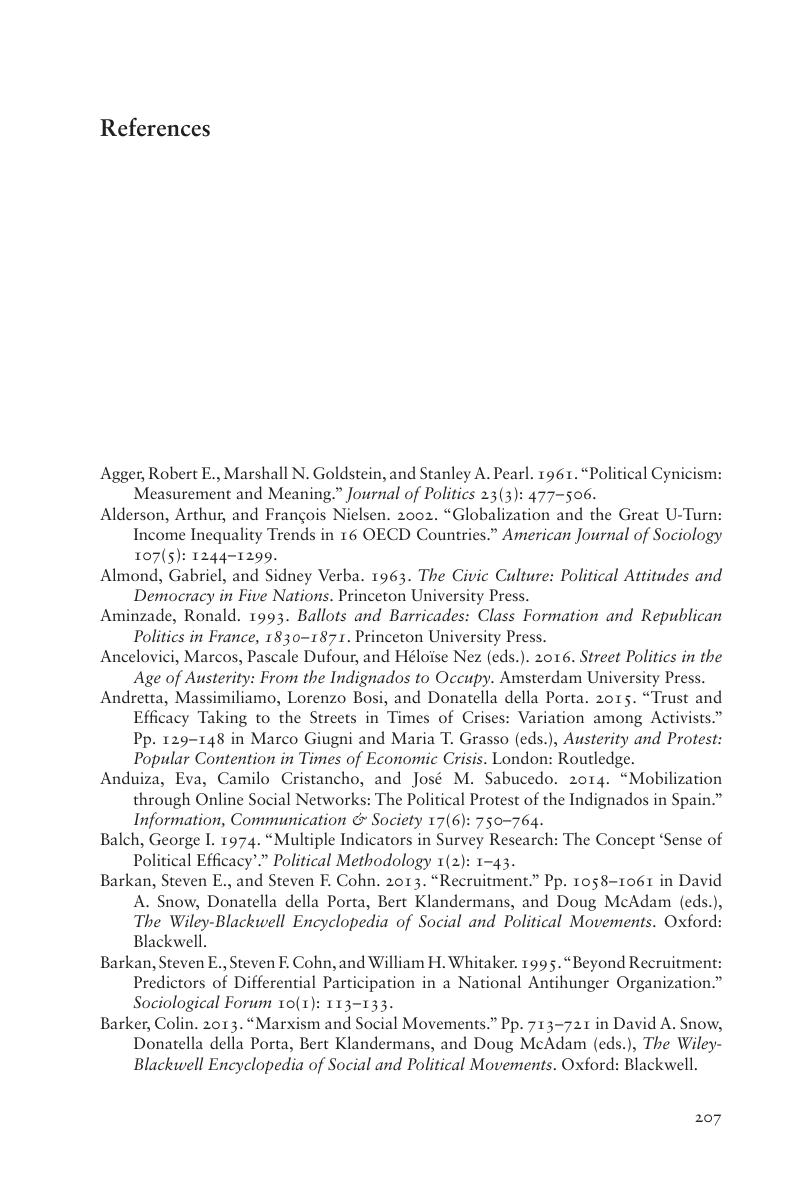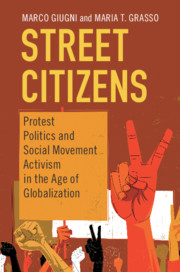Book contents
- Street Citizens
- Cambridge Studies in Contentious Politics
- Street Citizens
- Copyright page
- Contents
- Figures
- Tables
- Foreword
- Acknowledgments
- 1 Protest Politics and Social Movement Activism in the Age of Globalization
- 2 Contentious Europeans?
- 3 Bringing Capitalism Back In
- 4 Protest and Institutional Politics
- 5 Were They Pushed or Did They Jump?
- 6 Cognition and Affect among Demonstrators
- 7 Why Do People Want to Demonstrate?
- 8 Protest Politics and Social Movement Activism in Perspective
- Appendix
- References
- Index
- Series page
- References
References
Published online by Cambridge University Press: 15 March 2019
- Street Citizens
- Cambridge Studies in Contentious Politics
- Street Citizens
- Copyright page
- Contents
- Figures
- Tables
- Foreword
- Acknowledgments
- 1 Protest Politics and Social Movement Activism in the Age of Globalization
- 2 Contentious Europeans?
- 3 Bringing Capitalism Back In
- 4 Protest and Institutional Politics
- 5 Were They Pushed or Did They Jump?
- 6 Cognition and Affect among Demonstrators
- 7 Why Do People Want to Demonstrate?
- 8 Protest Politics and Social Movement Activism in Perspective
- Appendix
- References
- Index
- Series page
- References
Summary

- Type
- Chapter
- Information
- Street CitizensProtest Politics and Social Movement Activism in the Age of Globalization, pp. 207 - 230Publisher: Cambridge University PressPrint publication year: 2019



